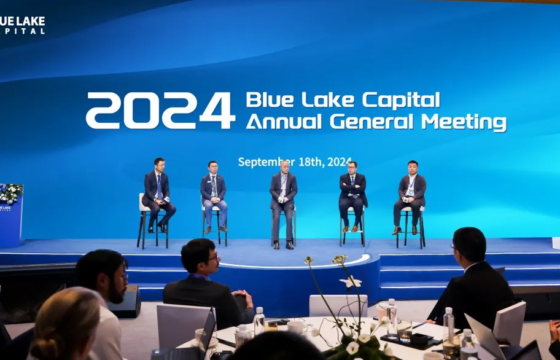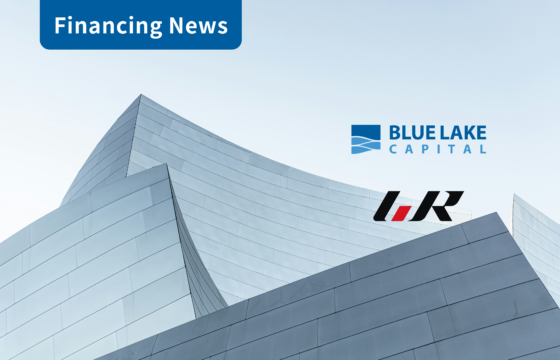New Hit in Additive Manufacturing: Raise3D Demonstrates Real Productivity

In recent years, additive manufacturing has become an important keyword for industrial upgrading in China. Unlike subtractive manufacturing, additive manufacturing fabricates objects with successive layers of materials. Without extra cost, it can deal with more complex design and product diversification, and enjoys more design freedom with less pressure from assembly and delivery. As a new technology that integrates intelligent and sustainable manufacturing with new materials and precision control, it plays an essential role in the “Made in China 2025” strategic plan. The Wohlers Report 2021 revealed that additive manufacturing (both products and services) have grown rapidly in the last decade, reaching a value of nearly $12.8 billion in 2020, with an annual growth rate of 27.4%.
The growth of additive manufacturing coincides with Blue Lake Capital’s investment focus on “technology for industrial innovation.” In the past few years, Blue Lake Capital has invested in many innovative additive manufacturing companies in China, including Shanghai Fuzhi Information Technology Co. (“Raise3D”) and Hubei Super Aviation Technology Co.
With the goal of becoming the leading 3D printing equipment manufacturer in the world, Raise3D has achieved a lot with its global strategy and supreme products. According to Context’s statistics, Raise3D ranks third in the world and first in China in the 2020 professional 3D printing market sales.
Raise3D closed its Series B+ financing round—led by Blue Lake Capital—last May and secured 100 million yuan in its Series C round last week (February 18), in which Blue Lake Capital also took part.
During the “Blue Lake Capital Investor Conference 2022,” Haitao Wei, Partner at Blue Lake Capital; Andrew Lu, Senior Associate at Blue Lake Capital; and Edward Feng, Founder and CEO of Raise3D, discussed “The Value and Application of Additive Manufacturing in Intelligent Manufacturing,” taking a look at the additive manufacturing industry from the perspective of both investors and entrepreneurs.

Andrew Lu: Additive manufacturing is still new to many people, who may only see the term in the core industries listed in the 14th Five-Year Plan. Blue Lake Capital has been active in this sector in recent years. So how do you see additive manufacturing in the big picture of intelligent manufacturing?
Haitao Wei: Additive manufacturing is an advanced processing technology that Blue Lake Capital has followed with keen interest for many years. In the automotive industry, powder metallurgy and injection molding of metals or ceramics are very mature technologies in this regard. It is the opposite of subtractive manufacturing, such as the cutting process in metal manufacturing, and so additive manufacturing enjoys a higher material utilization rate, using 98% or even 100% of raw materials in finished products.
It has a variety of applications, and Blue Lake Capital values technology innovation with this kind of industrialization possibilities. Applying new processing technology in manufacturing brings enormous potential and power for development. As you can see from Raise3D, the technology can upgrade production while reducing costs and receiving high customer acceptance. Therefore, we are very optimistic about the additive manufacturing industry and about investing in it.
Edward Feng: Our vision is for flexible manufacturing based on 3D printing. Traditionally, large-scale production is in quantities of millions or above. At the same time, flexible manufacturing is about producing only hundreds or thousands. With hardware, software, materials, and a platform built on 3D printing, we can realize customized and small-scale production.
Andrew Lu: In 2021, both primary and secondary additive manufacturing markets at home and abroad kept booming, and companies like Bright Laser Technologies and Farsoon Technologies have attracted a lot of attention in the domestic market. From an industry perspective, what makes 3D printing so popular?
Edward Feng: From where I stand, the popularity of 3D printing has a lot to do with the COVID-19 pandemic. The pandemic has held back the development of many industries, but not 3D printing.
In 2020, when the supply chain suffered from the material shortage in Europe and the United States, many people turned to 3D printing for COVID-19 prevention supplies. There was a news report, in May 2020, about a U.S. soldier using two 3D printers to print out four N95 masks in 45 hours. It was beyond our imagination because the supply chain in China was intact. People were saying things like, “Isn’t that stupid? Why not just buy them instead of wasting two days printing them?” What people didn’t understand is that the production of a mask requires a dozen suppliers working together. However, with a 3D printer and raw materials, one person would be enough, and it may take a long time but it can help people to cope with the shortage of supplies.
From the supply perspective, the 3D printing industry woke up the leading material manufacturers, such as BASF SE and Covestro AG. They started to focus on how to switch to 3D printable materials and to solve the problem of material shortage, which is where 3D printing fits in.
From the demand perspective, on the one hand, engineers, especially in Europe and the United States, begin to see how 3D printing can increase output. This is why the application of 3D printing in dentistry in the last year or two has grown dramatically. And in addition, the decreasing price of 3D printers has accelerated market sales.
Last year in collaboration with Peak and Jordan, Raise3D launched several 3D-printed shoes in China. It really highlighted that the manufacturing industry, especially for footwear and apparel manufacturers, has seen rising labor costs due to recruitment difficulties while shifting to Southeast Asia. And 3D printing came to the rescue.
3D printing can effectively reduce the labor costs, and this is a new solution that additive manufacturing brings from the manufacturers’ perspective.
Haitao Wei: From our perspective, additive manufacturing can be of great value to the manufacturing supply chain. First, this new technology enables manufacturers to improve production capacity economically. Second, given China’s huge market and export capacity, more global companies like Raise3D can emerge. The enterprises will be able to embrace a larger market size and a higher level of development. This is what people get excited about and why the capital market has started to lay eyes on additive manufacturing in the past year or two.
Andrew Lu: Blue Lake Capital attaches great importance to technology industrialization. However, there is still a long way to go from a technology to a product that can be mass-produced and bought in the market. So what are the critical elements in between?
Edward Feng: There are two aspects. First, the product—what the technology can produce—Is everything. In my eyes, the most challenging thing about innovation is not to solve but to find the problems. Raise3D believes that the product comes first. In the United States, we have tens of thousands of users. We directly communicate with them through a dozen engineers to fully understand their needs to upgrade our hardware and software products constantly.
Second, engineers still need to bridge the gap between technology prototypes and mass production. The requirements of the supply chain, operation system, and R&D system vary with the production scale, and a perfect prototype always exposes many problems in mass production.
Haitao Wei: As you said, a seemingly simple task of 3D printing takes a lot of effort. Raise3D’s products are made in China and sold directly to Europe and the United States. The long distance between the R&D team and the clients sets very high requirements for the software and hardware supply chain and assembly required to achieve excellent product quality and stable performance. But Raise3D has managed to do so.
This is how convincing a product can be, and it is the reason why we invested in Raise3D when we had only met each other once. This cooperation is attributed to your trust in Blue Lake Capital. What strikes me the most is the way that Raise3D stands out in the extraordinarily ferocious competition in 3D printing. In 2015, countless 3D printing companies rushed into the market. They focused on the domestic market, selling a few products to researchers in universities. But Raise3D decided to go for the challenging overseas market, because they wanted to be tested in a more mature market. Even now, we still agree with this decision. Now, 3D printing is gradually becoming an essential production tool in Europe and the United States, and China is also on the way.
We see technology industrialization come down to the following points: Firstly, there must be a real problem to solve. If a product cannot solve customers’ issues, there’s no way to sell it. Secondly, it matters whether the product and technology can meet customers’ needs. Finally, the market has to be big enough to allow the company to obtain a revenue like 500 million or a billion yuan to scale up. If all of those are in place, then with product innovation and iteration, the company can stay as a leading player in the industry.
The gap between technology and industrialized products is enormous. But more Chinese companies are playing leading roles by bringing them together in the global market. I feel lucky as an investor to be in this field.
Andrew Lu: As a booming industry, what are the new or noteworthy opportunities in the sector of additive manufacturing?
Edward Feng: After a 30-year development history in 3D printing, why did it grow so quickly in the last decade after 20 years of slow steps? The turning point was the RepRap Project in 2008, which dragged down the price of 3D printers to thousands of U.S. Dollars, launching a new era of 3D printing. Before that, 3D printers cost at least hundreds of thousands, even millions of yuan, and the consumable materials cost thousands of yuan per kilogram. It was the high price that kept 3D printing away from applications.
For me, success in the additive manufacturing sector lies in three things: save money, save time, and solve problems. In the past two or three decades, additive manufacturing has been more about solving problems, such as aerospace and military industries, which have enough budget and urgent needs to keep up with requirements. Even with limited use, 3D printing had its application scenarios. It was like five-star luxury hotels in the hotel industry before the emergence of 3D printers at a few thousand U.S. dollars in 2008. The position of luxury hotels is limited, and smaller ones can be unsafe. The largest group of business travelers need convenience hotels. That was the situation with 3D printing. We entered the 3D printing industry in 2013 and failed two years later. But we came back in 2015 with the belief that 3D printing needs to be affordable and easy to access for further development.
I see great opportunities in three directions:
First, in the price zone from $25,000,000 to $20,000. Any technology that comes down in this price zone has a huge opportunity.
Second, the applications of special materials. When Blue Lake Capital was about to invest in us, we were developing 3D printing applications for metals and ceramics. With their help, we have a better understanding of the special materials market in this regard.
Last, for specific application scenarios. For example, after the material R&D for low-cost technologies—whether in the footwear and apparel industry or 3D medical applications, such as assistive devices and orthopedic insoles—reasonable solutions based on specific application scenarios are be promising.
Haitao Wei: The additive manufacturing companies we invested in have their specialty. Raise3D engages in productivity tools, while Hubei Super Aviation Technology provides solutions for end-to-end closed-loop scenarios. I think there will be more opportunities in both directions.
( Raise3D is a professional 3D printer equipment manufacturer that provides state-of-the-art 3D printing equipment and solutions for leading global manufacturing companies (including SpaceX, Tesla, Apple, DJI, etc.), helping them to accelerate R&D innovation and product iteration and realize flexible manufacturing in the future. Raise3D products are sold in 173 countries and regions worldwide, and more than 50,000 manufacturers worldwide have chosen to use Raise3D products. Statistics show that Raise3D ranked third in the world and first in China in professional 3D printing devices in 2020. )
Follow us on Wechat


